Match the reactions in Column I with nature of the reactions / type of the products in Column II.
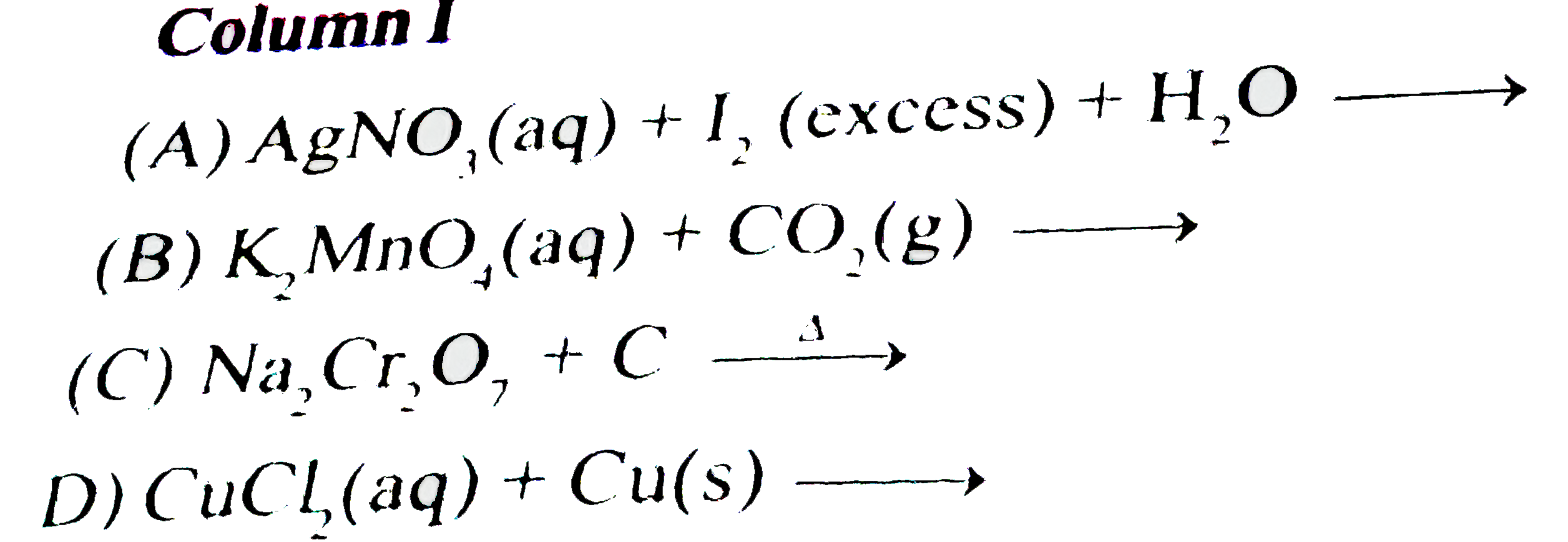

AgNO3(aq)+I2(excess)+H2O→ (p) Disproportionation
K2MnO4(aq)+CO2(g)→ (q) Comproportionation
Na2Cr2O7+CΔ−−→ (r) Redox
CuCl2(aq)+Cu(s)→ (s)One of the products is insoluble in water
The correct Answer is:(A−p,r,s);(B−p,r,s);(C−r,s):(D−q,r,s)
Refer electroochemical series
Topper's Solved these Questions
- BOOK - NARAYNACHAPTER - HALOGEN COMPOUNDSEXERCISE - Integer Type Questions8videos
HALOGEN COMPOUNDS
- BOOK - NARAYNACHAPTER - HALOGEN COMPOUNDSEXERCISE - Previous IIT JEE Question11videos
HALOGEN COMPOUNDS
- BOOK - NARAYNACHAPTER - HALOGEN COMPOUNDSEXERCISE - passage 312videos
HALOGEN COMPOUNDS
- BOOK - NARAYNACHAPTER - HALOALKANE AND HALOARENESEXERCISE - EXERCISE - 459videos
HALOALKANE AND HALOARENES
- BOOK - NARAYNACHAPTER - METALLURGYEXERCISE - STATEMENT TYPE QUESTOINS20videos
METALLURGY
Similar Questions
Knowledge Check
- Question 1 - Select One
Match the reactions in Column I with the types of products/the use of products in Column II.
 APQRS1324BPQRS3241CPQRS4312DPQRS4123
APQRS1324BPQRS3241CPQRS4312DPQRS4123
Match the reaction in Column I with nature of the reactions/type of the products in Column II.
Column IColumn II(A)AgNO3(aq)+I2(s)(excess)+H2O(l)→(p)Redox reaction(B)CrO2−4(aq)+H+(aq)→(q)One of the products has trigonal planar structure(C)MnO−4(aq)+NO−2(aq)+H+(aq)→(r)Dimeric bridged tetrahedral metal ion(D)NO−3(aq)+H2SO4(aq)+Fe2+(aq)→(s)Disproportionation(t)Colour of one of the products is due to charge transfer spectrumView SolutionMatch the reactions given in column-I with nature of reactions/type of the products given in column-II
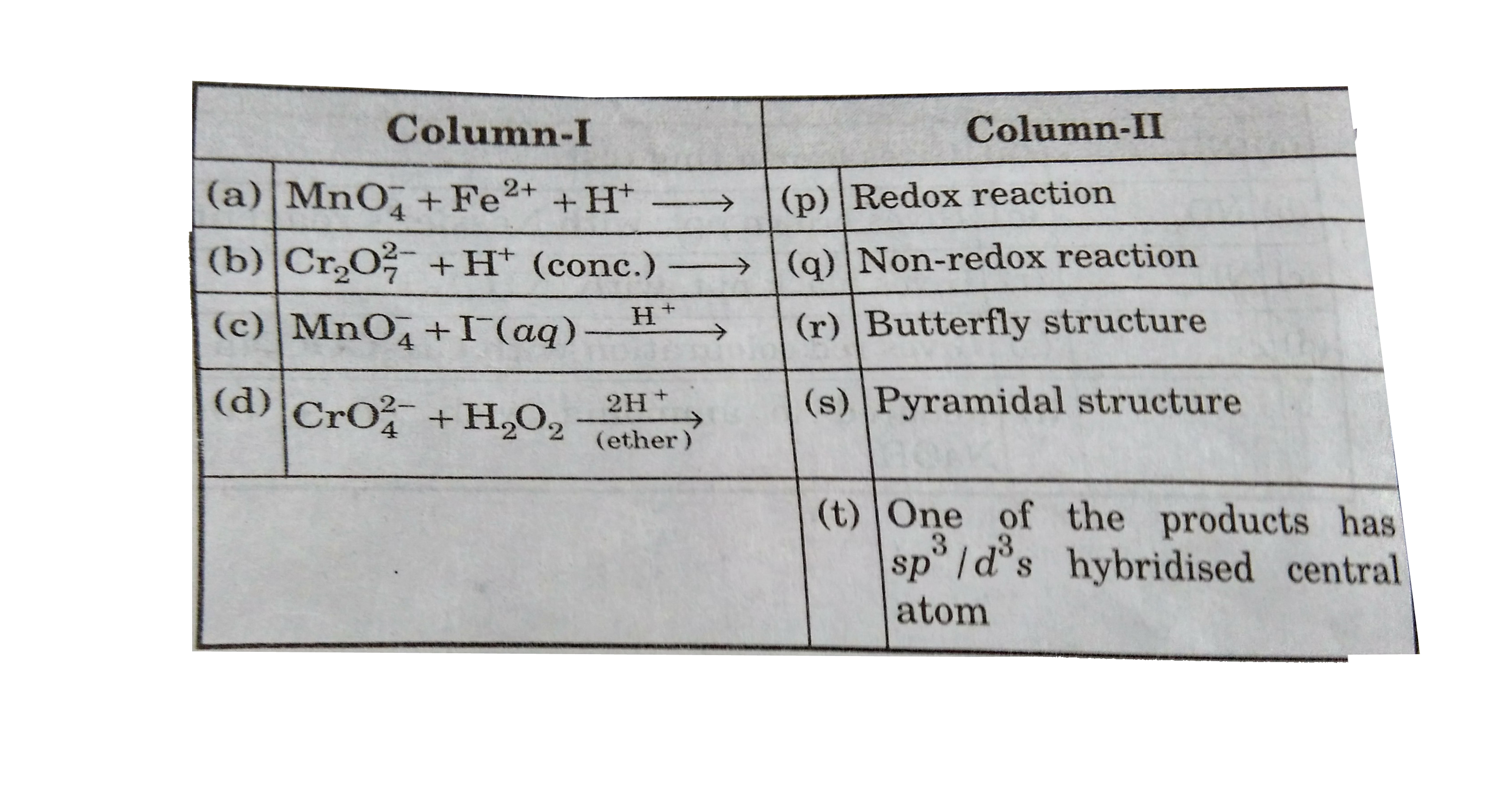 View Solution
View SolutionMatch the reactions given in Column I with the reaction types in Column II.
 View Solution
View SolutionMatch the reactions in Column I with approprate option in Column II.
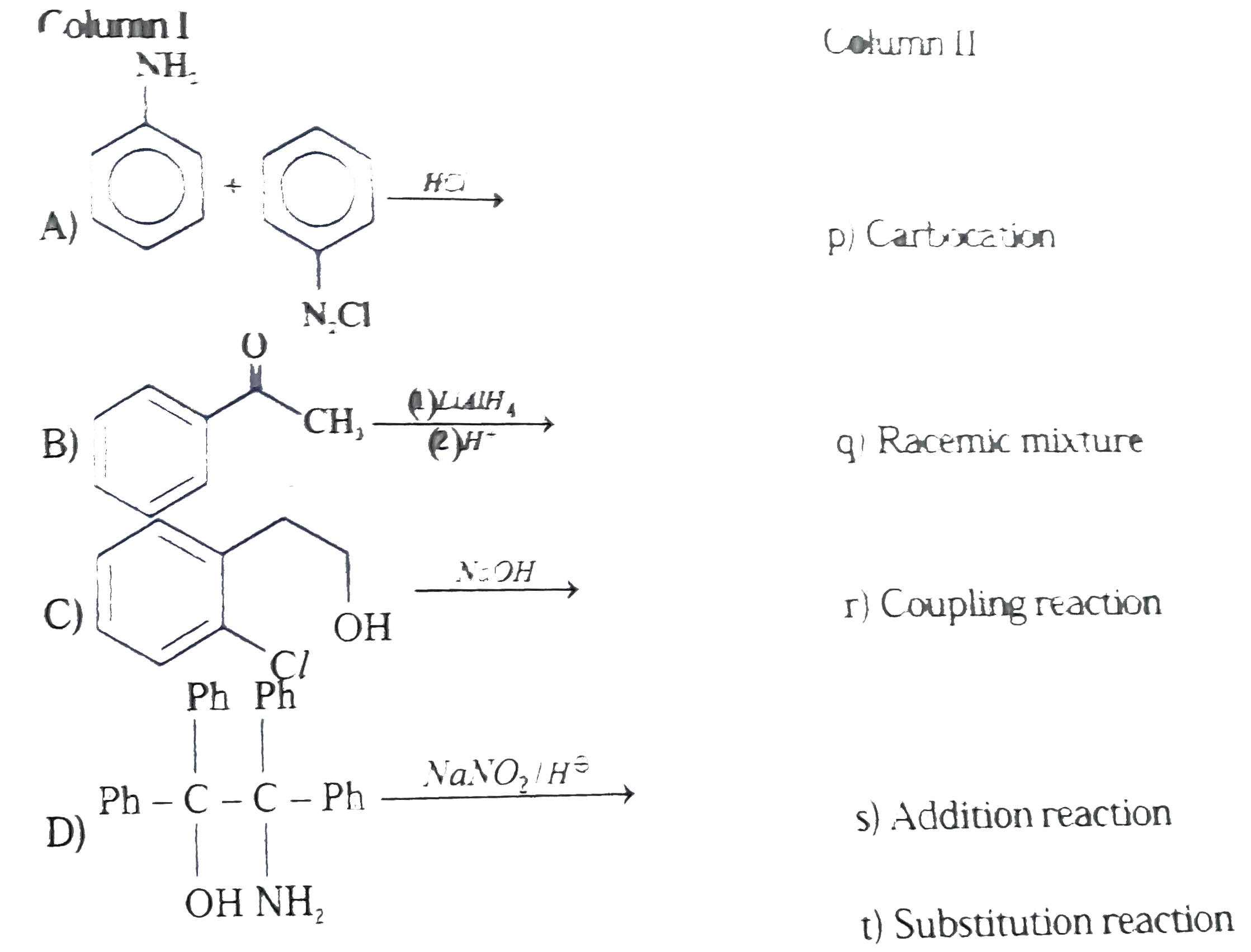 View Solution
View SolutionMatch the reactions listed in column-I with the characteristic (s) of the products listed in column-II.
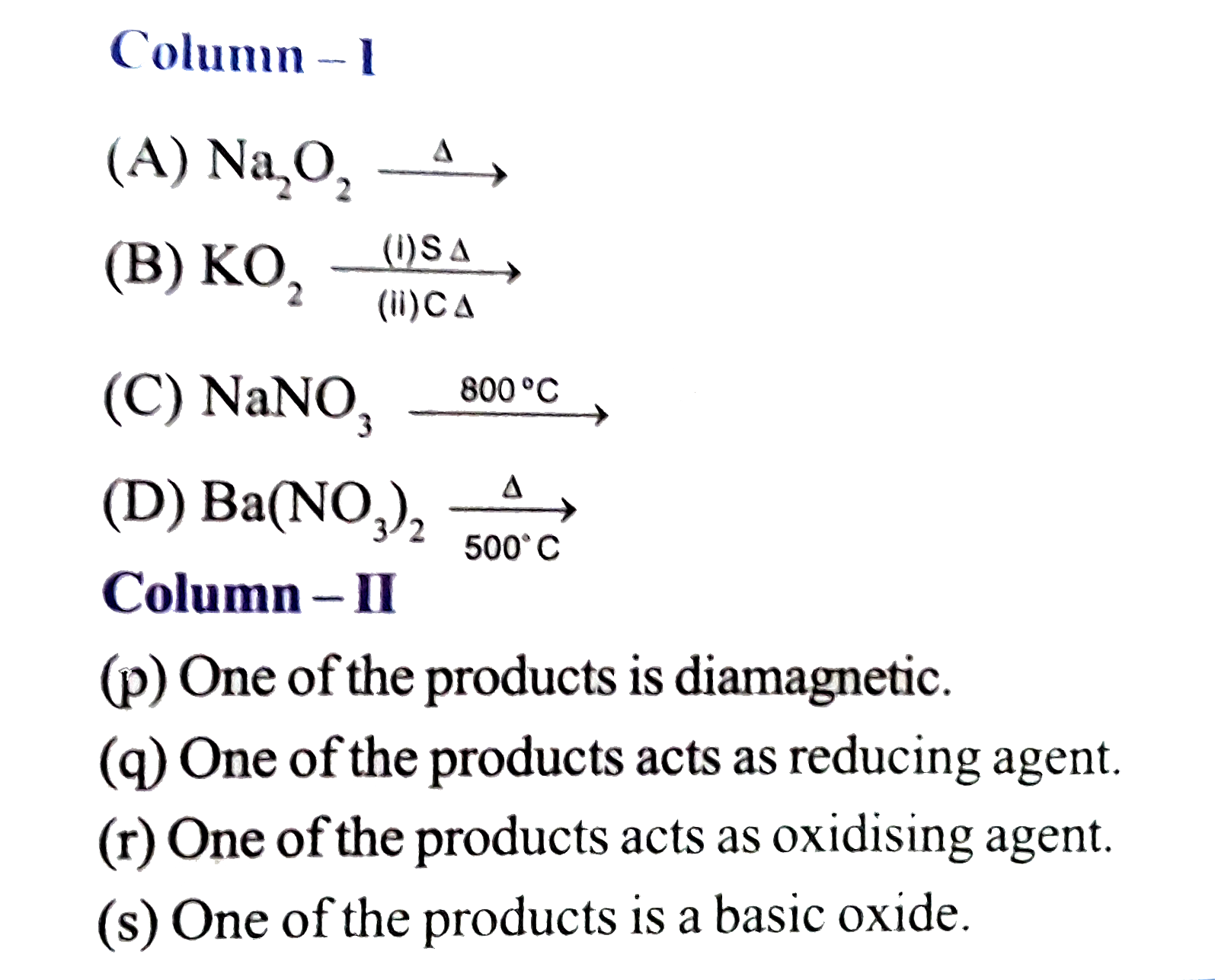 View Solution
View SolutionMatch the follwing reactants in Column I with the corresponding reaction products in Column II.
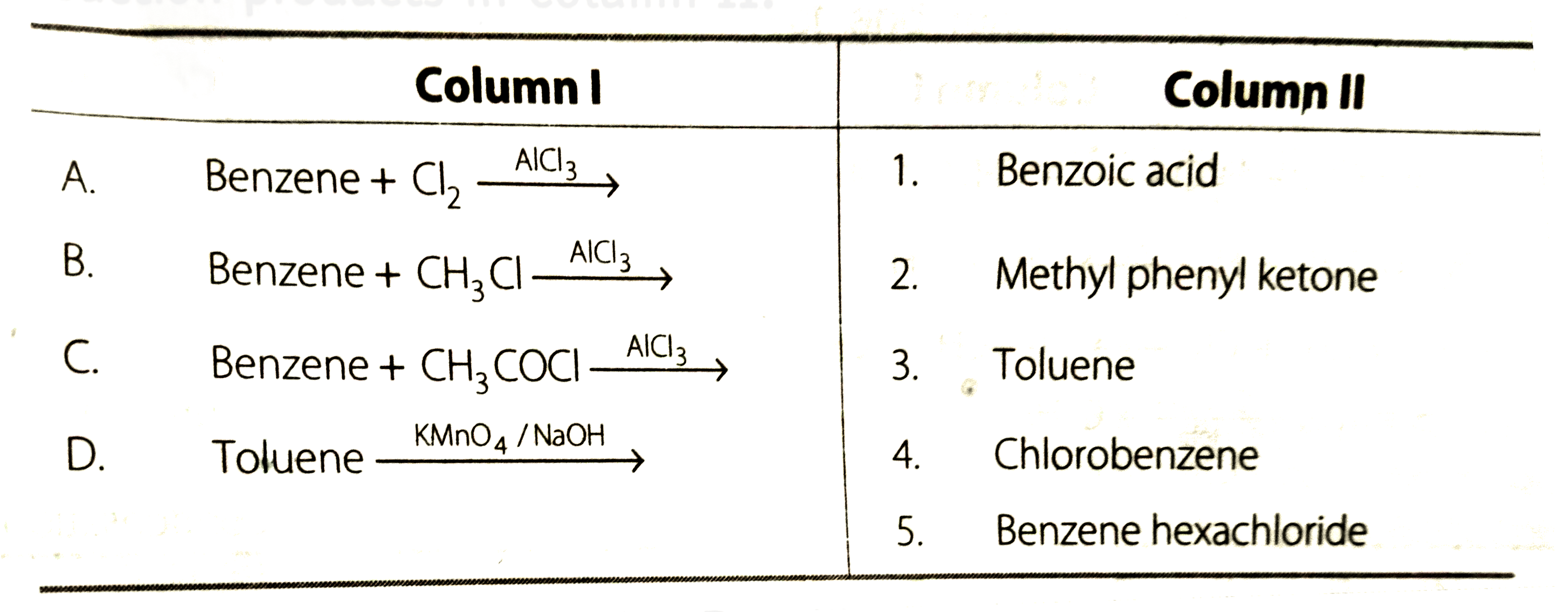 View Solution
View SolutionMatch the following reactants in Column I with the corresponding reaction products in Column II.
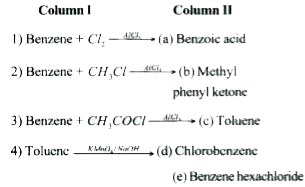 View Solution
View Solution


 .
.
